21 February 1778 Saturday
Vases, Candelabra, Grave Stones, Sarcophagi. Tripods, Lamps and Ancient Ornaments volume I
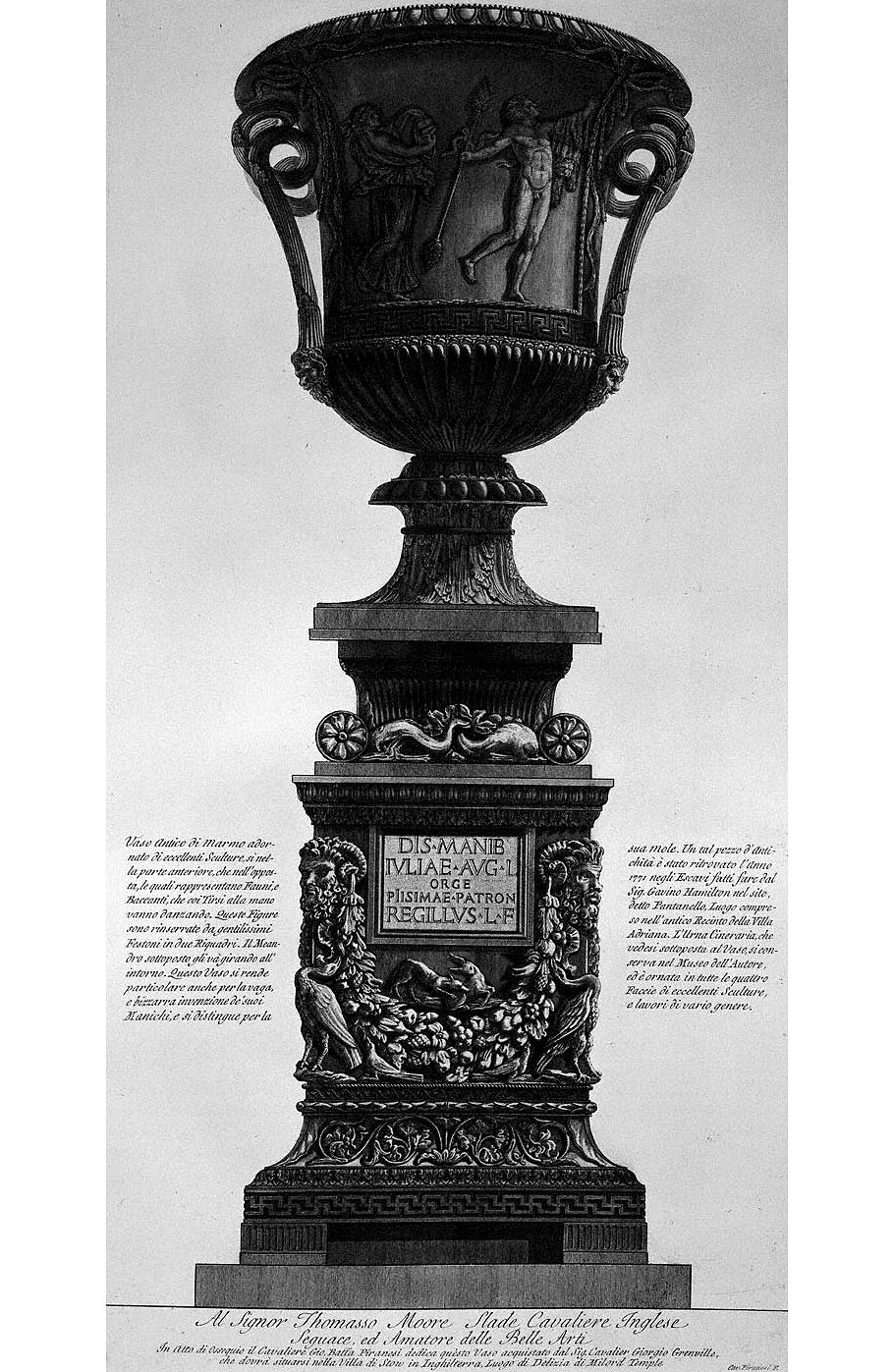
To Mr. Thomas Moore Slade English Knight Follower and Lover of the Fine Arts
In Act of Obsequiousness the Knight. Gio. Batt(ist)a Piranesi dedicates this Vase purchased by Mr. Cavalier Giorgio Grenville, which will have to be located in the Stow Villa in England, Place of Delight of Milord Temple
Ancient marble vase adorned with excellent sculptures, both in the front and in the opposite part, which represent Fauns and Bacchantes, who are dancing with Thyrsis in hand. These Figures are enclosed by very kind Festoons in two Boxes. The Meander subjected to it goes circling around it. This vase is also particular for the vague and bizarre invention of its handles, and is distinguished by its size. Such a piece of antiquity was found in the year 1771 in the excavations made by Mr. Gavin Hamilton on the site, called Pantanello, a place included in the ancient fence of Villa Adriana. The Cinerary Urn, which is seen placed under the Vase, is kept in the Author's Museum, and is decorated on all four Faces with excellent Sculptures, and works of various kinds.
Cav. Piranesi F.
21 February 1812 Friday
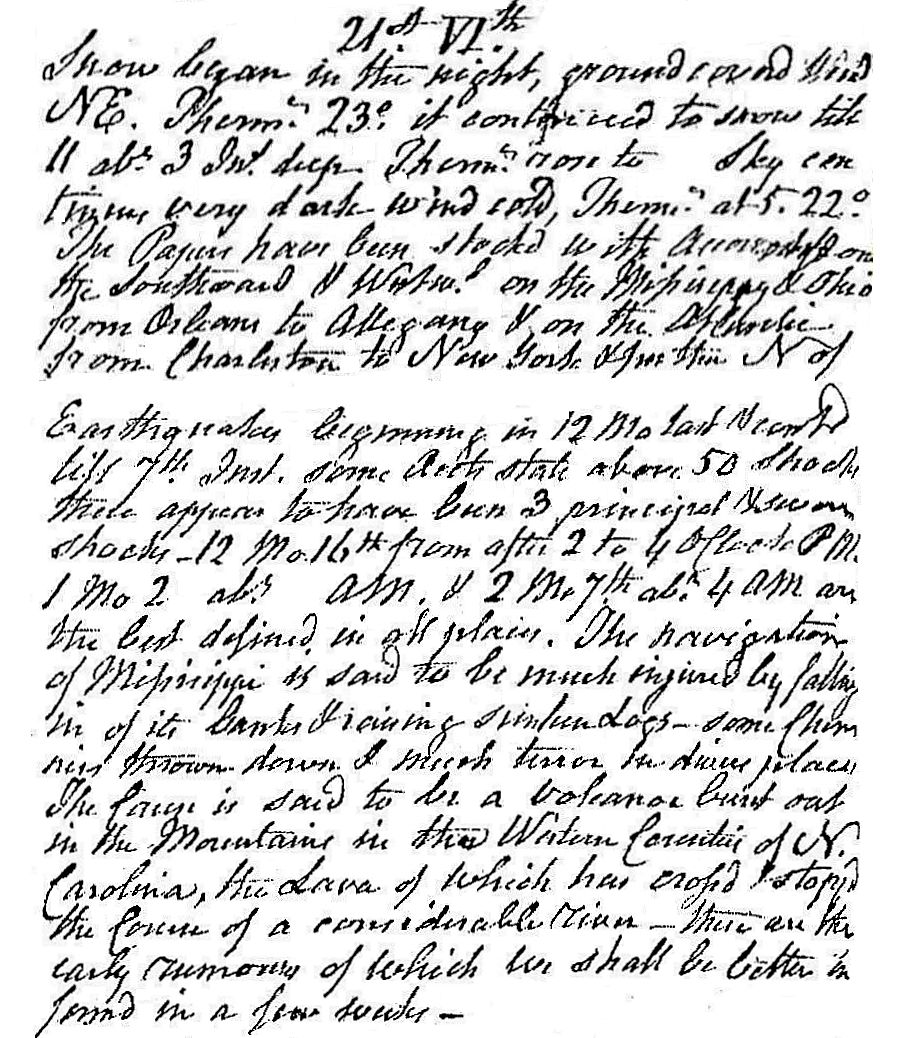
Snow began in the night, ground covered. Wind NE. Therm. 23°. It continued to snow till 11, about 3 inches deep. Therm. rose to [blank]. Sky continues very dark, wind cold. Therm. at 5 22°. The papers have been stocked with accounts of and on the southward and westward. On the Mississippi and Ohio from Orleans to Allegany and on the Atlantic from Charleston to New York and in the N. of earthquakes beginning in December last and continued till 7th .... Some accounts state above 50 shocks. There appear to have been 3 principle and severe shocks December 16th from after 2 t0 4 o'clock PM. January 2 about [blank] AM and February 7th about 4 AM are the best defined in all places[?]. The navigation of Mississippi is said to be much injured by falling in of its banks and raising[?] sunken logs. Some chimneys thrown down and much terror in ...... place. The ..... is said to be a volcano burst out of in the mountains in the western counties of N. Carolina, the lava of which has crossed and stopped the course of a considerable river. There are the early rumors of which we shall be better informed in a few weeks.
21 February 2002
Maria, wife of the emperor Honorius...
Maria, wife of the emperor Honorius, appears a second time within Piranesi's Il Campo Marzio in the "Ichnographia Campus Martius", the large fold-out plan where Piranesi reenacts ancient Rome's Campo Marzio and its environs, although in this instance, it is the sepulcher of Maria that is delineated rather than her sarcophagus.
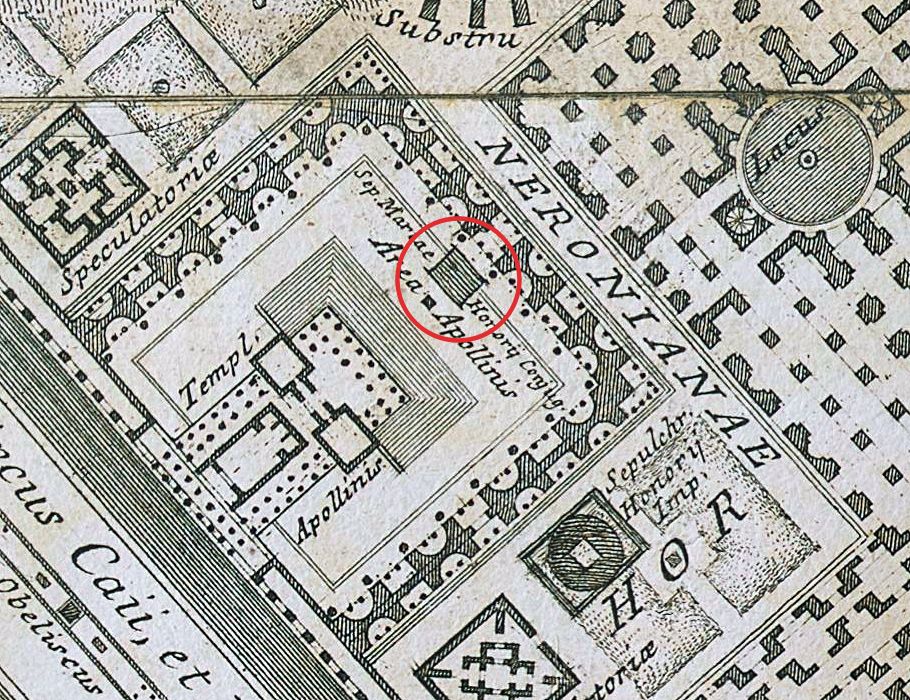
The sepulcher of Maria sits in front of the Templum Apollinis, and together these structures are within a court enclosed by rows of unnamed sepulchers and adjacent to the Circus of Caligula and Nero. This ensemble is part of the greater Garden of Nero, which is, and indeed was, situated within Rome's Vatican valley. It should be noted, however, that Piranesi separates the sepulcher of Maria from the sepulcher of the Emperor Honorius, the location where Maria's sarcophagus actually did lie. Moreover, neither the sepulcher of Maria nor that of Honorius are placed next to the Basilica of St. Peter's, which is altogether absent from the Ichnographia.
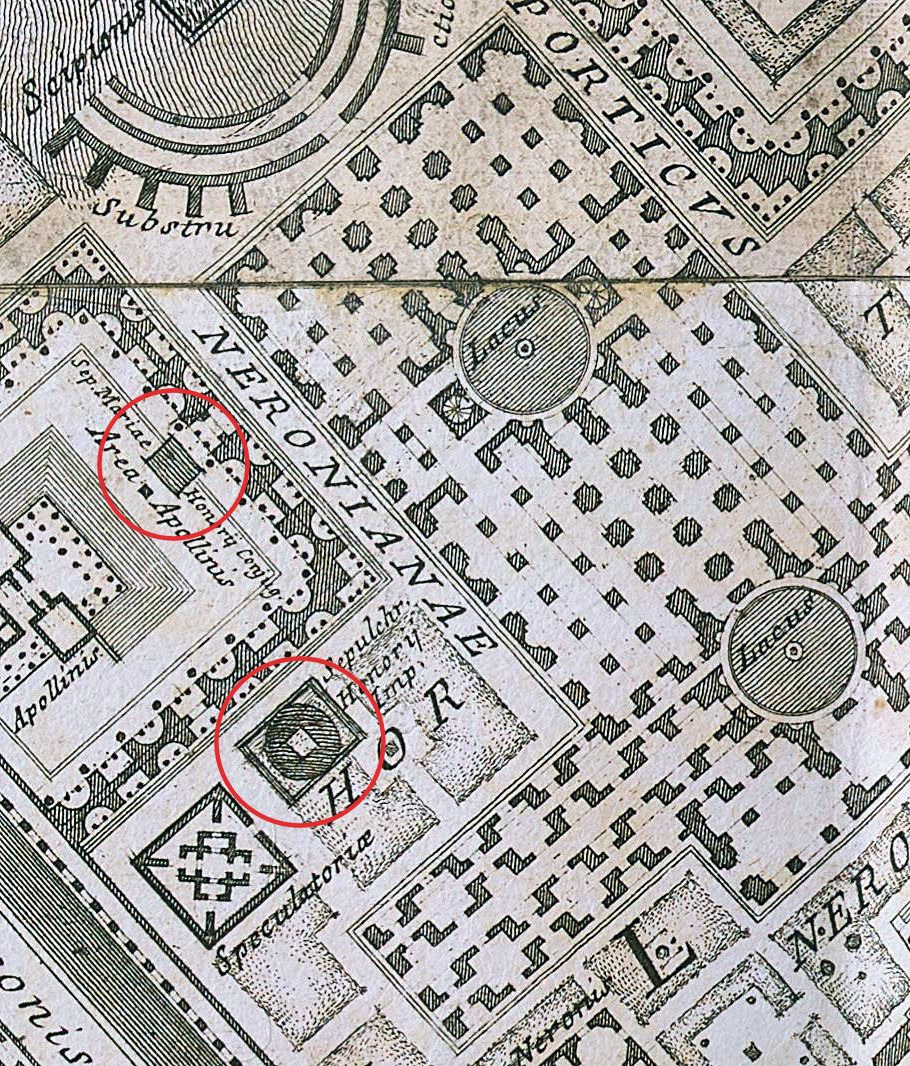
Essentially, Piranesi positions two of imperial Rome's Christian remains within an otherwise completely Pagan milieu, thus marking, albeit covertly, precisely where ancient Rome's inversion from Paganism to Christianity most resolutely occurred. Remember, St. Peter was martyred [maybe] in the Circus of Caligula and Nero and the altar of St. Peter's Basilica marks St. Peter's tomb.
21 February 2009
Bilocation Syndrome
In 315 AD, the Arch of Trajan was dismantled, moved, redesigned, and rebuilt as the Arch of Constantine
Eutropia: "Just take down the Arch of Trajan, and place it within the new arch."
Helena: "That's perfect, but where do we put the new arch?"
Eutropia: "I say over by the basilica begun by my son."
Helena: "Yes, over by the basilica completed by my son."
Eutropia: "Yes, over by the basilica begun by my son and completed by my son-in-law."
Helena: "Ha! Must you always have the last word?"
Eutropia: "Yes, I confess."
et clement Trajano in Paradiso via Dante
Bilocation Syndrome
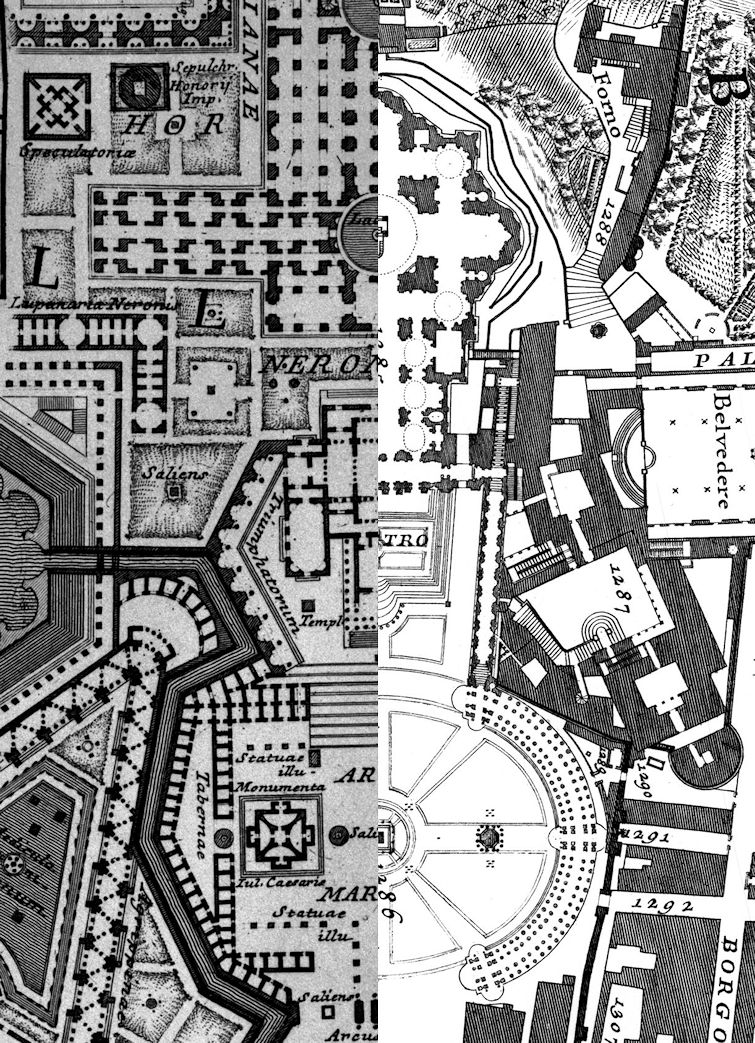
moreover, flexure, doubling
21 February 2014
21 February
The last mention of Louis Kahn within Tafuri's Theories and History of Architecture (1968) occurs on page 231, just six pages short of the textual end of the book:
"...let us try to re-state our initial proposition: criticism sets limitations to the ambiguity of architecture.
This means that the historian has to oppose the 'camouflaged anti-historicism' of present architecture. By writing past events into a field of meanings, the historian gives sense to the ambiguity of history: from abstract and completely available the ambiguity is rendered concrete and instrumentalizable. He will refuse to read in late-Antique architecture the premises of Kahn or Wright, in Mannerism those of Expressionism or of the present moment, in the pre-historical remains the premises of organicism and of some abstract experiences. And this refusal is a precise contestation of the mythologies of the pseudo-avant-garde."
As already cited earlier in the book, "late-Antique architecture" is short-hand for Hadrian's Villa and Piazza Armerina--"many late-Antique architectures from Villa Adriana to Piazza Armerina" (p. 110)--but it is also a veiled reference to Piranesi's Ichnographia Campus Martius:
"The disarticulation of the spatial successions, in the Villa Adriana or in the Piazza Armerina, are so coherent with the premises that justify them--the test of the autonomy range of the single spatial fragment, modulated, contracted or made elastic, to emphasize its absoluteness and to increase its ambiguity within the entire context--as to make these works a sort of anthology, not only for successive studies, but also as sources to draw from: not by chance was a whole number of Perspecta taken up by the Villa Adriana [sic], and Kahn often showed his interest for this singular group of architectural objects.
What is of value in those exceptional late-antique monuments is the series of differentiated spaces that join and clash with one another: Piranesi's Campo Marzio, that owes so much to the study of the Villa Adriana, takes to the limit its formal bricolage, moving its search for a semantic polyvalency to another scale and to another historical context." (p. 113)
It's not clear why Tafuri considers Hadrian's Villa as an example of late antique architecture, since it was built almost two centuries before what is considered the late antique period. The Piazza Armerina is late antique, even possibly connected to Maximian and Eutropia, and it is quite possible that Tafuri uses the Piazza Armerina as an historiographical link between Hadrian's Villa and Piranesi's Ichnographia Campus Martius.
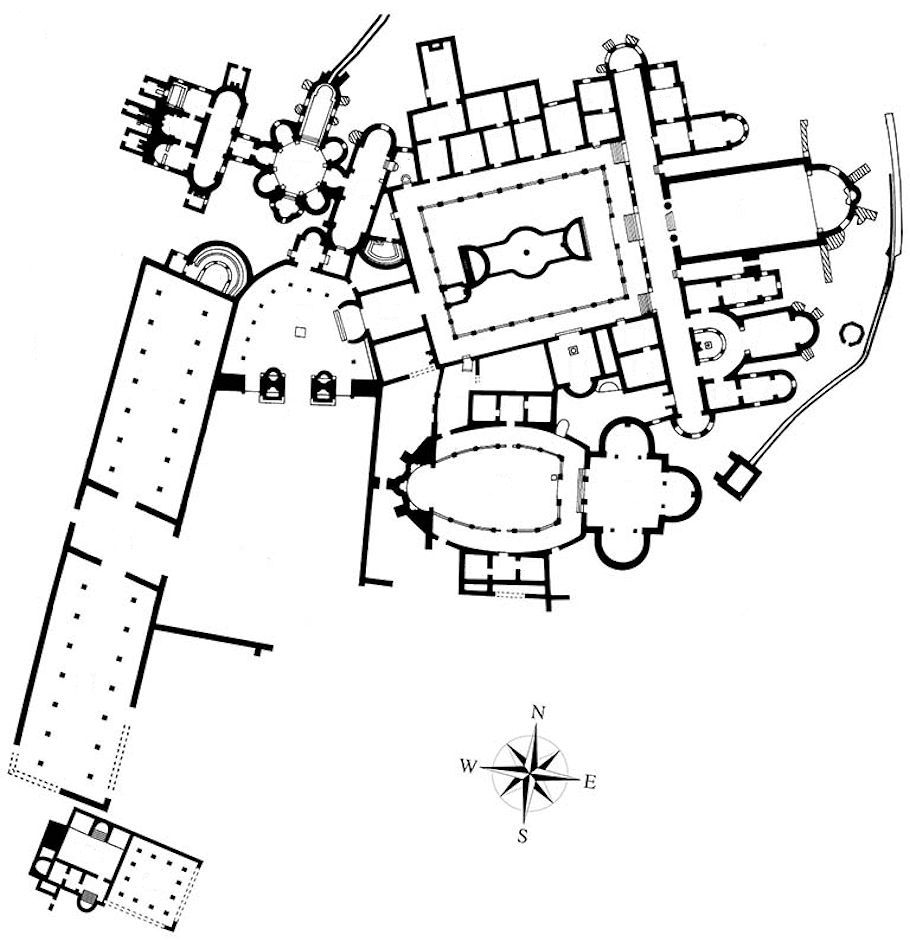
So, in re-phrasing Tafuri's last mention of Kahn within Theories and History of Architecture we have:
"He [the historian] will refuse to read in [the] architecture [of Hadrian's Villa, the Piazza Armerina, and of Piranesi's Campo Marzio] the premises of Kahn or Wright..."
Tafuri's "refusal to read" is a direct rebuttal to a key passage within Vincent Scully's Louis I. Kahn (1962):
"Not so in the studies between the laboratories; their problem demanded a more complicated sequence of Form and Design, and its solution was again characteristic of Kahn. Early shapes used were pure derivations from the fanning pattern of the lower peristyle of Domitian's palace on the Palatine or from the "Teatro Marittimo" of Hadrian's Villa. It will be recalled that Wright had long before adapted the plan of the Villa as a whole for his Florida Southern College of 1939, and had used shapes from or related to it in later projects, while Le Corbusier had supplemented his sculptural Hellenic impulses with a series of drawings of the Villa's spaces which culminated in his top-lit megara at Ronchamp. More directly, the shapes used by Kahn can be found not only in Choisy but also infinitely repeated in the composite photostat of Giovanni Battista Piranesi's maps of Rome, drawn by him for his book on the Campus Martius, probably of 1762, which now hangs in front of Kahn's desk. Nervi, too, has used this curvilinear pattern in some of his ribbed slabs. Kahn had intended to support the studies on columns which arose from the associated garden at the lower level to grasp them about at the thirds of their arcs; but a further stage of Design intervened: the scientists could not see the sea from these shapes. Thus they were modified and the present simpler forms grew out of them.
Patterns from Rome and, most particularly, from Ancient Rome as imagined by Piranesi at the very beginning of the modern age, have played a part in the process at the Meeting House as well . An early sketch had been traced by a draftsman, partly as a joke, from a plan of one of the units of Hadrian's Villa itself. "That's it," said Kahn." (p. 37)
I never before imagined the prospect of considering Tafuri's Theories and History of Architecture a deliberate deterritorialization of the Philadelphia School.
21 February 2017
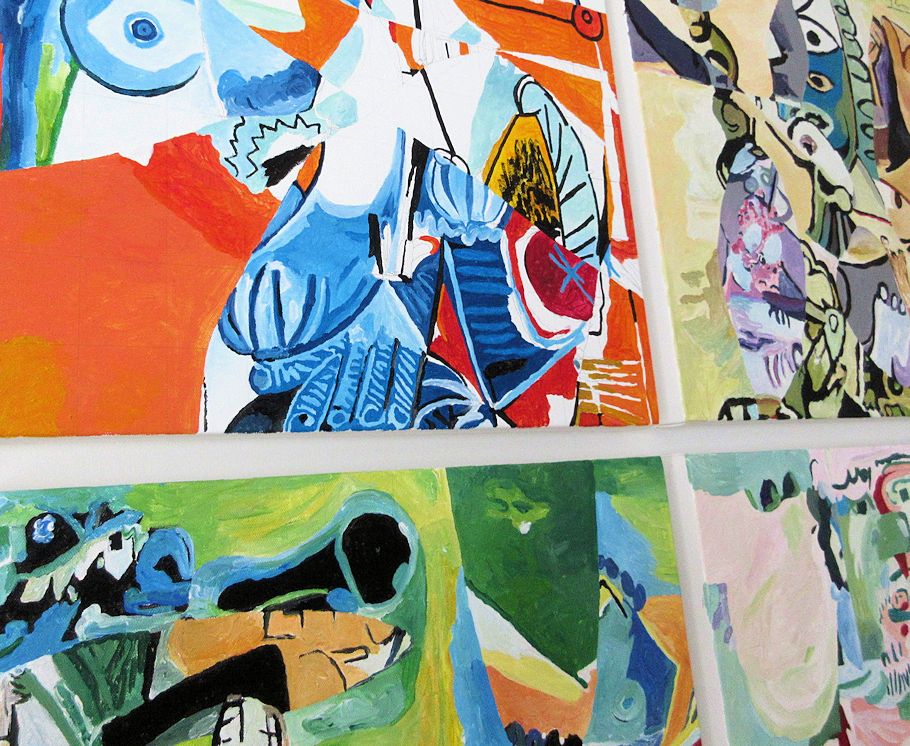
21 February 2019
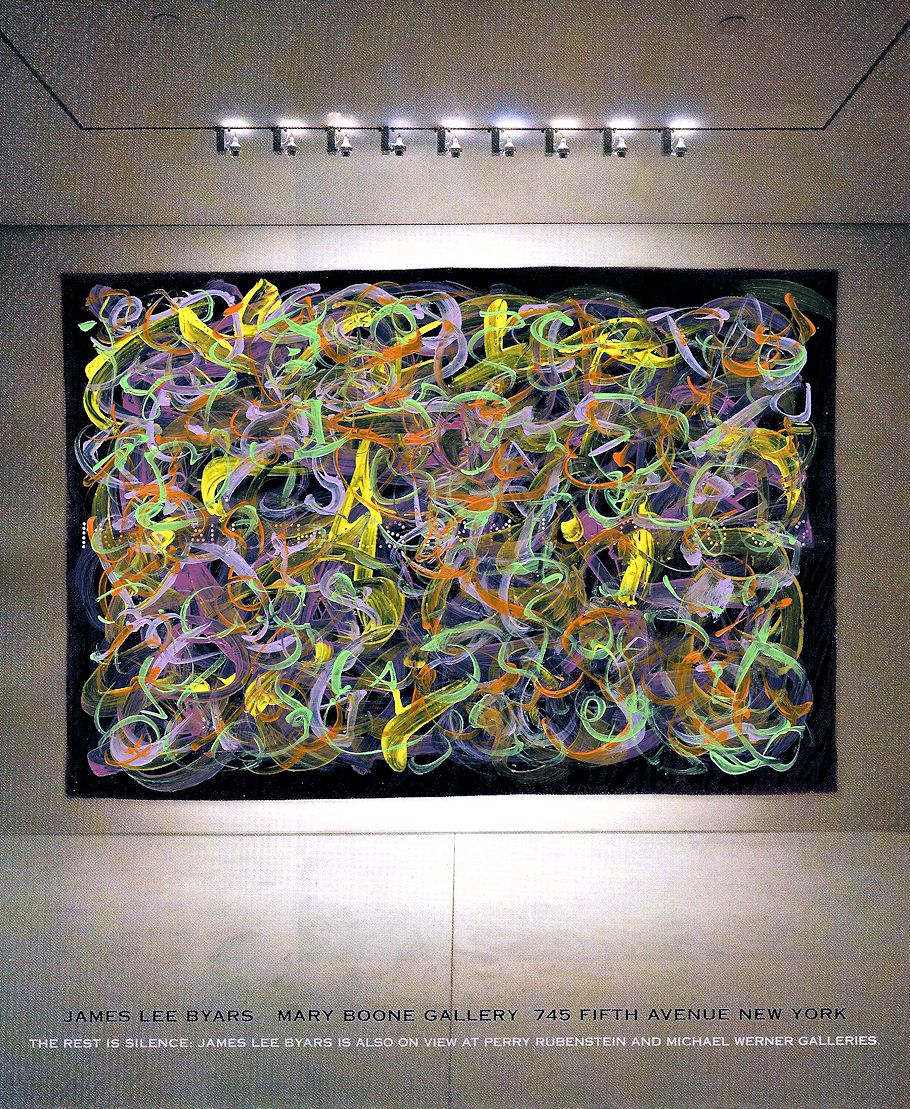
Mary Boone's 180 hours of community service hour 14
21 February 2023 Tuesday
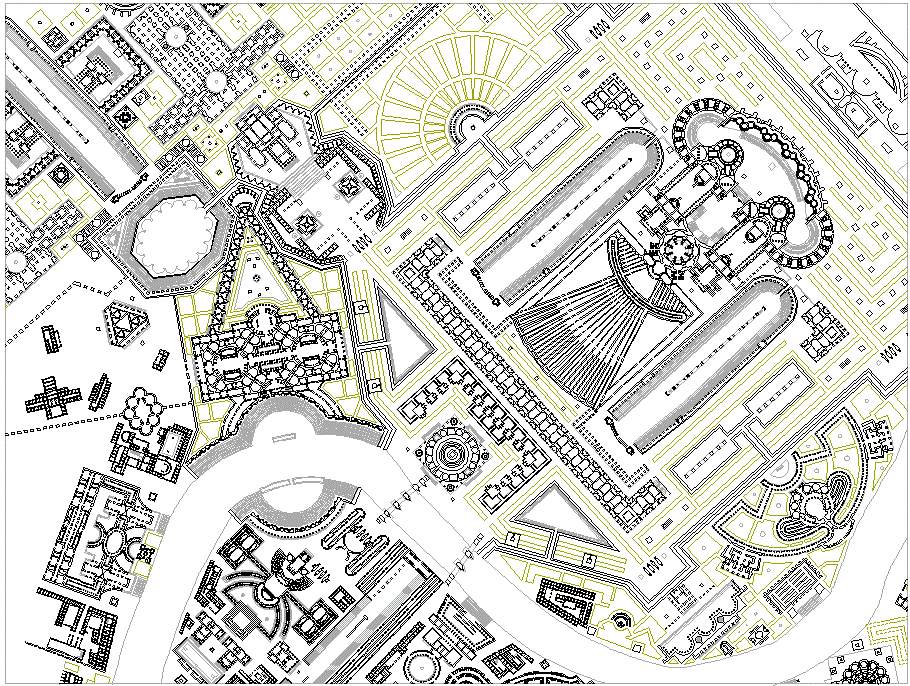
Ichnographia Campus Martius Tab. VI second state
Lots of good conversation with JP: halos, bull's eyes, nightmares, architecture's unwokeness, crimes against humanity, plus good jokes.
Raccolta de' tempj antichi Parti I
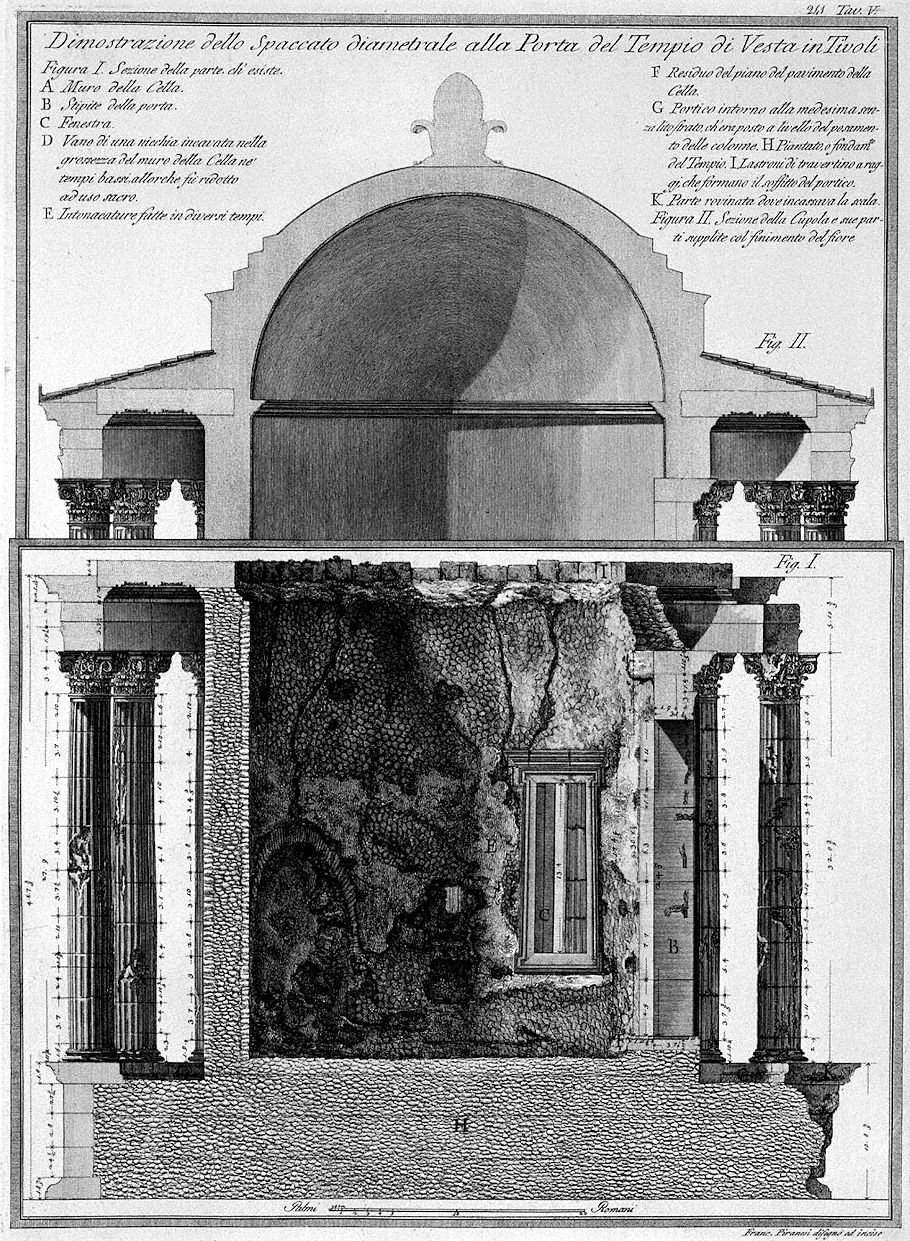
Demonstration of the diametric cross-section of the Gate of the Temple of Vesta in Tivoli.
Figure I. Section of the part, which exists.
At the Cell Wall.
B Door jamb.
C Fenestra.
D Compartment of a niche hollowed out in the thickness of the wall of the Cella in low times, when it was reduced to sacred use.
And Plastering done at different times.
F Remnant of the floor plan of the Cella.
G Portico around the same without lithostrat, which was placed at the level of the columns.
H Planted, or foundation of the Temple.
The Slabs of travertine with rays, which form the ceiling of the portico.
K Damaged part where the staircase was recessed.
Figure II. Section of the Dome and its parts supplied with the decoration of the flower
Franc. Piranesi drew and engraved 1780
|